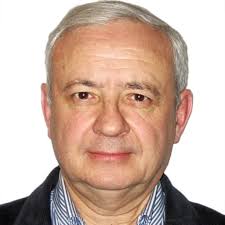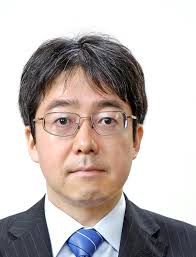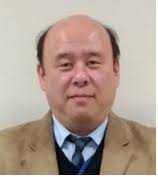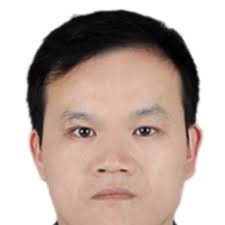Day 1 :
Keynote Forum
Andrey Ionin
P N Lebedev Physical Institute-RAS, Russia
Keynote: Hybrid gas laser systems operating within ~2 - 20 micron
Time : 09:30-10:10

Biography:
Abstract:
Hybrid laser systems based on nonlinear frequency conversion and mixing of CO and CO2 laser emission by various nonlinear crystals ZnGeP2, GaSe, AgGaSe2, PbIn6Te10 and BaGa2GeSe6 into radiation on sum and difference frequencies including second and third harmonics within the wavelength of ~2 – 20 micron are discussed.
Keynote Forum
Hideyuki Nakano
Muroran Institute of Technology, Japan
Keynote: Amorphous molecular materials with photomechanical and mechanochromic functions

Biography:
Abstract:
Organic low molecular-mass materials usually exist in their crystalline states below their melting temperatures. However, suitable chemical modifi cation of molecules allows to provide the organic low molecular-mass materials that readily form stable amorphous glasses at ambient atmosphere. We have been performing studies of such materials, we refer to as "amorphous molecular materials". We have designed and synthesized a variety of amorphous molecular materials and investigated their structures, properties, and applications to photo- and electro-active deviced. In the present talk, our recent results regarding amorphous molecular materials with unique functions will be introduced. Recently, photomechanical behaviors observed for organic photochromic materials have been attracting attention. We have designed and synthesized a variety of amorphous molecular materials that exhibit photochromism. And we have found that azobenzene-based amorphous molecular materials exhibited several photomechanical behaviors, such asb photoinduced surface relief grating formation of their films, photoinduced bending motions of their microfi bers, the movement of the fragments of these molecular glasses induced by angled irradiation from their bottom, and so on. As another topic, the phenomena of reversible changes in fluorescent color of the emitting solid materials induced by mechanical stress such as grinding, namely mechanochromic luminescence, have recently received a great deal of attention. We have designed and synthesized emitting amorphous molecular materials and found that amorphous molecular materials based on diarylaminobenzaldehyde exhibited mechanochromic emission.
Keynote Forum
Toshihiro Miyata
Kanazawa Institute of Technology, Japan
Keynote: Kanazawa Institute of Technology, Japan
Time : 11:10-11:50

Biography:
Abstract:
We recently reported a dramatic improvement of the obtainable photovoltaic properties in p-n heterojunction solar cells fabricated by depositing appropriate n-type oxide semiconductor thin fi lms using a pulsed laser deposition (PLD) method on p-type Cu2O sheets. However, PLD method have technical disadvantages for practical fabrication technology of solar cells, such as, low deposition rate and diffi cult to large area deposition. On the other hand, magnetron sputtering (MSD) method was easy to prepare the large area deposition and obtaining the high deposition rate. But, photovoltaic properties of Cu2O-based heterojunction solar cells fabricated by magnetron sputtering (MSD) method was poor than that of PLD. In this paper, we describe the improvement of the photovoltaic properties for Cu2O-based heterojunction solar cells using the newly development multicomponent n-type oxide semiconductor thin films prepared by the sputtering apparatus having the multi-chamber system. Thermally oxidized p-Cu2O sheets (with a hole concentration (p) of 1013 cm-3, Hall mobility in the range of 100-110 cm2/Vs) were used as an active layer. Th e multichamber MSD apparatus have loading and deposition chambers, and used a d.c. and an r.f. (13.56 MHz) power supply that was applied either separately or together. For example, a high effi ciency of 3.74% was obtained by AZO/n-type Zn0.8- Ge0.2-O thin fi lm/p-Cu2O heterojunction solar cell fabricated by depositing using low-damage MSD on non-intentionallyheated Cu2O sheets. The is the highest value of the efficiency of Cu2O heterojunction solar cells using sputtered n-type oxide semiconductor thin films.
Keynote Forum
Wu Shengchuan
Southwest Jiaotong University, China
Keynote: Defect induced fatigue damage behaviors of additively manufactured components via in situ 3D X-ray microtomography
Time : 11:50-12:30

Biography:
Abstract:
Selective laser melting (SLM), as a metalworking additive manufacturing technology, has received considerable attention from both academic and industry fields due to unprecedented design freedom, high surface quality and balanced material property. Titanium alloys and in particular Ti6Al4V are well suitable to be processed by SLM. It is believed that the mechanical performance of SLM Ti6Al4V alloys can satisfy the design standard typically based on wrought material properties. However, the fatigue behavior of SLM components often suffer from local imperfections including micronized pores and Lack of Fusion (LOF), presenting a defect dominated failure where cracks are prone to initiate from pre-existing defects. In order to promote the robust design of SLM parts used into aerospace and high-speed railway industries, this paper performs a detailed investigation about the process-induced defect and its effect on the fatigue damage behavior of selective laser melting Ti6Al4V alloys. With high brightness and resolution synchrotron radiation source, the accurate characterization and statistics of defects in terms of population, size, location and morphology have been realized. Most micropores tend to be a sphericity of 0.40-0.65 and have the equivalent diameter less than 50 μm. Extreme value statistical method was applied to predict the maxima defect in larger volume. To detect and identify the coupling effect between defects and cracks, an in situ fatigue testing rig was developed to well work at the synchrotron radiation tomography system. It was found that the fatigue failure occurred at a smaller irregular defect near the specimen surface rather than the largest defect, showing a typical I mode semi-elliptical crack profile. Finite element simulation was further employed to elucidate the interaction between the pore and cracking behavior in terms of stress concentration factor and extended pore volume. Finally, by using high cycle fatigue experiment and fatigue crack growth rate testing as well as the fractography-based measurement, a modifi ed Kitagawa-Takahashi (KT) diagram was tentatively established
for the defect tolerance assessment. A critical defect size of 54 μm was assumed inside SLM Ti6Al4V alloys in terms of the KT diagram.
- Lasers and Nonlinear Optics | Photonics| Industrial Applications of Laser and Photonics Optoelectronics | Applied Industrial Optics
Location: 1
Chair
Changhui Rao,
Institute of Optics and Electronics, Chinese Academy of Sciences, China
Session Introduction
Changhui Rao
Institute of Optics and Electronics, Chinese Academy of Sciences, China
Title: Progress on 1.8m Solar Telescope CLST
Biography:
Abstract:
For better understanding and forecasting of the solar activity, high resolution solar observations are required. From 2011, we started to develop the Chinese Large Solar Telescope (CLST), which is a classic Gregorian configuration telescope with a 1.8-meter honeycomb sandwich fused silica lightweight primary mirror with ULE material and active cooling. Th e CLST is being integrated in our Institute. A solar adaptive optics system, which consists of a 451-element deformable mirror, a low-order wavefront sensor with 9×9 array, and a real-time controller, had been built for first light high resolution solar observations in G-band, Hα band, and TiO band. In this presentation the main system configuration and the corresponding post focal instruments are described. Furthermore, the latest progress and first light on-sky solar observational results of the CLST are also reported.
Andrey Ionin
P N Lebedev Physical Institute-RAS, Russia
Title: Si-based laser-made nanocoatings for destroying bacterial biofi lms
Biography:
Abstract:
Antibacterial coatings were fabricated by laser ablation of silicon in liquid media. Laser radiation (λ=1030 nm,τ=10 ps, E=10 μJ) was focused onto the Si wafer under the 5-mm layer of liquid carbon disulfi de (CS2) and raster-scanned across the surface. The resulting laser-induced morphology consisted of nanosheets (NS) with high height-to-width ratio, and its antibacterial properties were tested on S. aureus strain. Th e S. aureus strain was grown in a nutrient medium and incubated for 24 h at 37°C on the surface of Si NS, smooth Si wafer and silica glass as a control. Their staining with “Live/Dead Biofi lm Viability Kit” allowed assuming, that no any biofilm was formed onthe Si NS, unlike smooth Si and silica glass. The bacterial death was possibly caused by the mechanical damage of the cell membrane on the sharp edges of Si NS, or its possible chemical activity. Another type of antibacterial coating was fabricated by placing Si nanoparticles (NPs) on a smooth Si wafer. NPs were prepared by laser ablation (λ=1064 nm,τ=120 ns, E=0.1 mJ) of silicon plate under the 3-mm layer of either isopropanol or deionized water. Th e resulting Si NP colloidal solutions were air-dried, and their antibacterial activity and hydrophobic properties were tested using S. aureus and P. aeruginosa.
Yangyi Liu
Institute of Optics and Electronics,China
Title: Fast visible imaging spectrometer for 1.8-m solar telescope CLST
Biography:
Abstract:
The Fast Visible Imaging Spectrometer (FVIS), which consists of three rotating pre-fi lters, an air gap based Fabry-Perot interferometer (FPI) and an imager, is being developed as one of the post instruments of the 1.8-m Chinese Large Solar Telescope (CLST). The FPI is placed behind the adaptive optics system to acquire the high resolution solar images. By changing the plate separation of FPI, the position and gap of a series of equidistant transmission peaks are tunable. Multiple by the unchanged transmission profile of the pre-filters, the transmission peak at working wavelength is selected. The centre wavelength of three pre-filters are at 5890, 6562.8 and 8542 angstrom corresponding to the Na I, Hα and Ca II line of the solar spectrum respectively. By changing the pre-filters with a rotator, the FVIS is able to image at three wavelengths with resolving power about 74700@5890A, 68400@6562.8A and 54000@8542A. Th e FVIS can image at tens of different wavelength positions in a few seconds because the quick response of the Piezoelectric actuators for cavity length regulation. In this presentation, the scientific requirement, design, parameters and experiment plan of the FVIS will be presented.
Junyong Kang
Xiamen University, China
Title: Abnormal radiative interband transitions and tailorable orbital-state coupling in High- Al-Content AlGaN quantum wells
Biography:
Abstract:
It is widely held that the confinement of carriers at lowest quantum level is more pronounced than that of higher quantum levels, which has been long established on the conventional continuous potential wells and favourable for efficient light emission. We observed the abnormal behavior of the carrier confinement from the c-plane of high-Alcontent AlGaN quantum well (QW) due to the dispersive crystal field split-off hole composed of pz orbitals. [ACS Photonics 4, 2197–2202 (2017)]. The orientational pz orbitals are sensitive to the confi ning directions which affect the orbital inter-coupling. The barrier potential for the confi nement is then determined by the joint effect of orbital inter-coupling and the band off set. We have performed theoretical calculations by constructing Al0.75Ga0.25N/ AlN quantum well models with variable lattice orientations to further investigate the orbital inter-coupling among atoms between the well and barrier regions. It is found that, the barrier potential as well as the transition rate of the band edge is enhanced by the orbital engineering with the well plane inclined from 0º to 90º with a step of 30º, referring to the (0001) plane. Experimentally, the concept of the orbital engineering is demonstrated through the construction of inclining well planes on the semi- and non-polar planes implemented in the micro-rods. The higher emission intensity from the QW on the non-polar plane is confirmed by localized cathodoluminescence (CL). The orbital engineering presented in this work aims to spur on the further improvement of high-Al-content AlGaN optoelectronic devices and the design of other innovative devices.
Yong Bo
Technical Institute of Physics and Chemistry-CAS, China
Title: High power high-repetition-rate microsecond pulse sodium beacon laser
Biography:
Abstract:
Sodium laser guide star is generated by resonant scattering of a 589nm laser with sodium atoms in the upper atmosphere of the altitude of 80-105 km. As a beacon with the sodium laser guide star, an adaptive optics system can correct the wavefront aberration due to atmospheric turbulence and improve greatly the large ground telescope resolving power. In the letter, a high power high-repetition-rate microsecond pulse sodium beacon laser prototype was developed. Th e sodium beacon laser is based on sum-frequency mixing between the 1064 nm and 1319 nm beams in a LBO crystal. Both the 1064 nm and 1319 nm lasers are produced from diode-side-pumped Nd:YAG master oscillator power amplifi er (MOPA) laser systems. At the repetition rate of 500 Hz and pulse width of about 120 μs, the average output power of 65 W is achieved with the wavelength of 589.159nm. Th e beam quality factor of M2 is 1.4 and the linewidth is about 0.3 GHz. By using the sodium beacon laser prototype, a bright sodium laser guide star with a photon return of 1820 photons.cm-2.s-1 was generated and observed with the projected power of 32W by the telescope in Xinglong site. What is more, a high resolution image of a star with the sodium laser guide star generated was obtained by the 1.8m telescope with the adaptive optics in Lijiang site.
Caroline Kulcsár
Laboratoire Charles Fabry - Institut d’Optique Graduate School-CNRS, France
Title: What high performance control can do for you? The example of adaptive optics
Biography:
Abstract:
Adaptive optics (AO) systems aim at compensating in real time optical aberrations induced by atmospheric turbulence, so as to retrieve quasi diff raction-limited imaging on ground-based telescopes. A deformable mirror is inserted in the optical path, and actuators, located under its reflecting surface, are controlled thanks to measurements of the wavefront aft er correction. Th e fi rst on-sky demonstration of AO was realized in 1989 at the Observatoire de Haute Provence (France) on a 1.52 m telescope, by a French-ESO consortium (European Southern Observatory). Twelve years aft er, in 2001, an AO system was installed on ESO’s Very Large Telescope (VLT) in Chile. First light results were impressive, with this system operating at a loop frequency of 600 Hz and controlling in real time 185 actuators from 270 measurements. Nevertheless, unexpected guests invited themselves with the atmospheric turbulence: vibrations (propagated from the telescope structure due to wind, vans, coolers, etc.) induced sometimes a severe performance loss. Recent and future AO systems thus feature high performance controllers designed to mitigate the many spurious signals affecting imaging quality. They are about to replace, at least partially,the so-called “integrator”, a standard controller prized for its simplicity. Why do integrators work (or not)? What can be expected from high performance controllers? When should they be considered as a relevant alternative for optical systems feedback loops? And at last, are they really implementable in real-time, in the era of giant telescopes featuring AO systems with thousands of degrees of freedom? Qualitative answers will be proposed, along with many illustrative examples.
